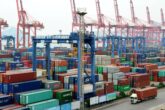August 13, 2020
Shaping the Fourth Offset
The Emerging Role of Export Controls in Pursuit of National Economic Self-Reliance
For more than 40 years, regulatory controls on exports of advanced dual-use technologies have melded dueling mandates: to craft trade restraints tailored to simultaneously enable broad commercial applications and restrict military adaptations, while effectively supporting ambitious national security and foreign policy objectives. Despite the built-in tension, this basic framework can serve U.S. interests effectively—if controls are well defined and regulators frame policies that spur rather than discourage innovation in the United States. By this measure, export controls have contributed successfully to the defense strategies known as the First, Second, and Third Offsets, each of which has sought to ensure U.S. defense superiority by maintaining a technological edge over potential military adversaries.
This long-standing approach, however, may be at odds with the rapidly changing economic and geopolitical environment.
For more than 40 years, regulatory controls on exports of advanced dual-use technologies have melded dueling mandates.
Consider how Congress defined the use of U.S. export controls in the Export Control Reform Act of 2018 (ECRA). The law authorizes the President to regulate exports only “after full consideration of the impact on the economy of the United States.” ECRA further limits controls to those necessary either to restrict a foreign country from obtaining items and technology that would contribute to the foreign country’s military potential, or to advance U.S. foreign policy. The President must account for a multitude of policy purposes: on one hand, achieving “qualitative military superiority,” strengthening the defense industrial base, and maintaining leadership in key industrial sectors; while on the other, focusing on “core technologies” that may pose a serious national security threat, working within multilateral control frameworks, and avoiding controls on widely available items.
An emerging (though as-yet unnamed) “Fourth Offset” in U.S. defense strategy―one focused on countering China’s rapidly modernizing military through increased U.S. economic autonomy―will severely test the traditional balancing act. As articulated in the 2017 National Security Strategy, beyond protecting “core technologies,” national security requires “changes to industry culture, investment sources, and protection across the National Security Innovation Base.” Nowhere is this strategy more apparent than in the drive to reshape global supply chains—a quest that fuses economic security and national security objectives while eschewing consideration of global commercial competitiveness.
An emerging (though as-yet unnamed) “Fourth Offset” in U.S. defense strategy will severely test the traditional balancing act.
In addition to containing the spread of sensitive items, export controls occasionally aim at changing the behavior of foreign actors—by, for instance, limiting exports to countries that support terrorism. In pursuit of a Fourth Offset, export regulations (not limited to ECRA-based controls) may be radically reimagined to alter U.S. industry culture and commercial strategies, including the nature and extent of global engagement. Expansive use of investment and trade restraints already point in this direction.
U.S. companies indeed have good reasons to restructure their exposure in and with China, and the U.S. government has even stronger imperatives to support domestic innovation and manufacturing capabilities. In a world that offers ample talent, capital, and consumers elsewhere, however, the challenge will be to use all policy tools, including export controls, within the limits of their design.
About the Author
Theodore W. Kassinger is Of Counsel at O’Melveny & Myers LLP.
Learn More
CNAS has asked a group of experts and policymakers to offer their perspectives on the policy goals that U.S. export controls should serve, and how and under what circumstances U.S. export controls can effectively achieve those policy goals.

Export Controls Are a Defining Instrument of U.S. National Security
A group of experts and policymakers offers their perspectives on the policy goals that U.S. export controls should serve....
Read MoreMore from CNAS
-
Game Over?
The trade wargame suggests that sustained high tariffs could create leverage and urgency to spur action toward a productive restructuring of the international trade system....
By Emily Kilcrease & Geoffrey Gertz
-
Middle East Security / Energy, Economics & Security
Trump Inks $600 Bn Deal In Saudi Arabia | Musk, Blackrock CEO Flank Trump In Gulf VisitIn today's episode of India Global, U.S. President Donald Trump secured a $600 billion commitment from Saudi Arabia on Tuesday to invest in the United States. NDTV's Gaurie Dw...
By Daniel Silverberg
-
Energy, Economics & Security / Technology & National Security
Tariffs and Tech: An Uncertain RecipeHigher tariffs could prompt American cloud companies to shift more of their capital investments abroad....
By Pablo Chavez
-
Trump Tariffs: How Will U.S. Plans Reshape the Global Economy?
Donald Trump says he's already decided the tariffs he will impose on countries that export goods to America, including the United Kingdom. Channel 4 hears from Emily Kilcrease...
By Emily Kilcrease




